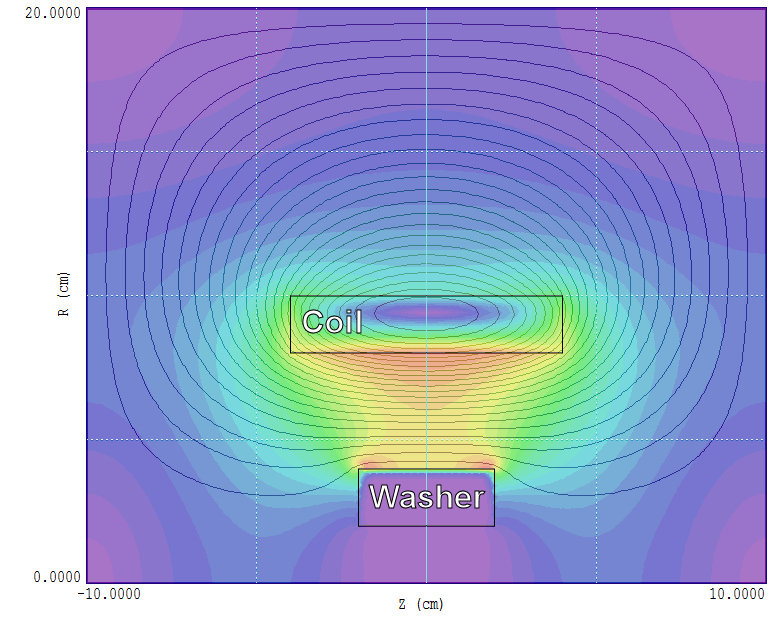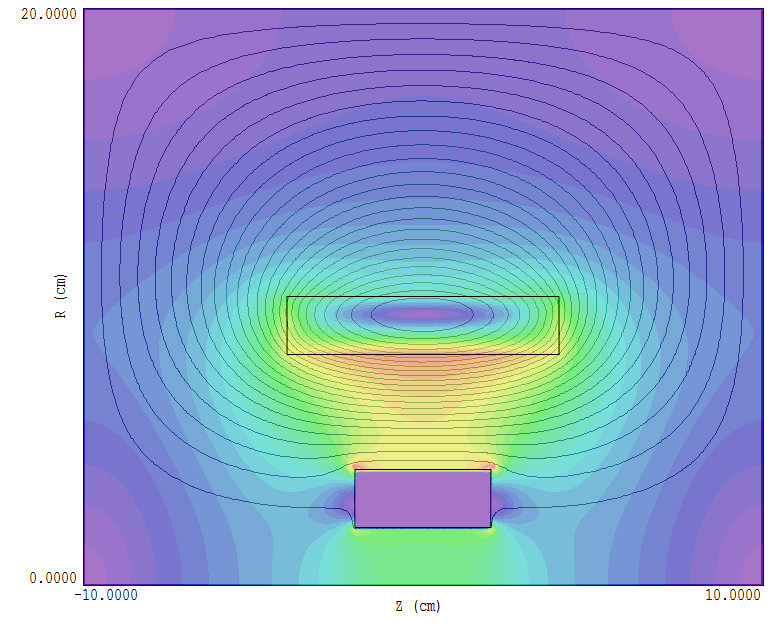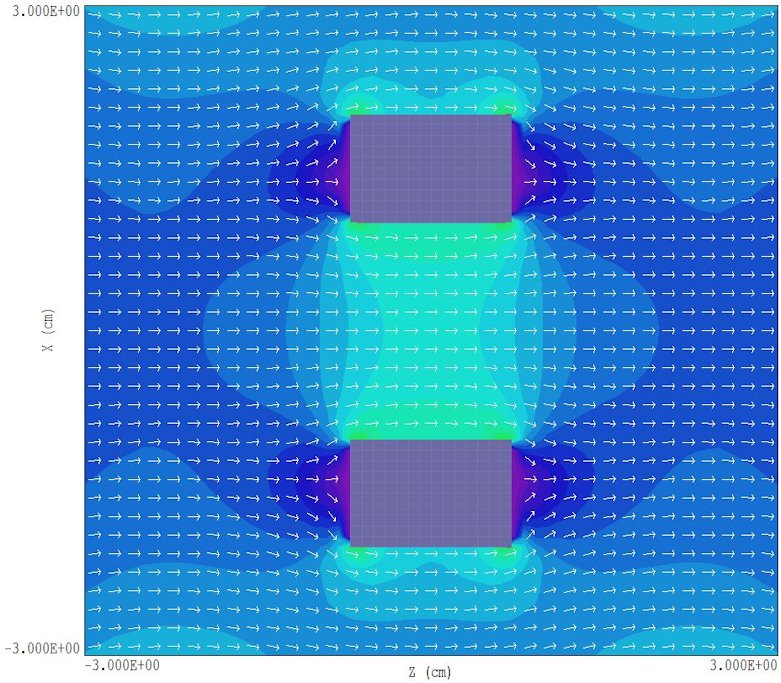Although Magnum is a static-field code, under certain circumstances it can represent highly-conductive metal objects in a pulsed magnetic field. The strategy is to assign a small value of relative magnetic permeability inside the object (e.g., μr = 0.001). The condition guarantees that there is no magnetic flux density inside the object and that lines of B outside the object are parallel to the surface, the same condition that applies to a perfect conductor (Sect. 2.3 of the Magnum manual gives an example). A comment from a user made me aware that there are some cases where the technique does not lead to the expected solution. In this article, I will show a counter-example and discuss validity criteria.
Consider a metal washer (torus) in a pulsed magnetic field Bz, where z is the washer axis of symmetry. Figure 1 shows the geometry (note that the illustration shows a plot in r-z plot, so the coil and washer cover the full 360° of azimuth). The figure shows lines of B and the variation of |B| from a time-dependent solution with the Pulse program. Current in the coil rises to a constant value in 1 ms. The washer (with conductivity σ = 5.0E-8 s/m) has a skin depth small compared to its thickness. The flux-density inside the washer is close to zero and lines of B are parallel to the surface. The critical feature is that electric field induced during the rise of B creates a large azimuthal current that excludes magnetic flux from the volume enclosed by the washer.

Figure 1. Dynamic magnetic field solution for a conductive washer with the Pulse program.
In comparison, Fig. 2 shows a static field solution with PerMag for the same geometry. In this case, the washer was assigned a relative magnetic permeability μr = 0.001. Although the field inside the washer is approximately zero and B is parallel to the surface, the global behavior of the field solution is completely different. The washer excludes flux from its own volume, but not from the enclosed interior region. Figure 3 shows the Magnum solution, equivalent to that of Fig. 2.

Figure 2. Static magnetic field solution with PerMag for a washer with small relative magnetic permeability.

Figure 3. Static magnetic field solution with Magnum for a washer with small relative magnetic permeability.
The conclusion is that the solution depends not only on the final coil current and boundary conditions on objects, but also on the history of the field. One way to achieve the solution of Fig. 2 is to include a narrow gap in the washer that prevents net azimuthal current, to raise the coil current to its operating level and then to close the gap.
In review, a washer that covers an angle less than 360° leads to an entirely different field solution than a complete washer (360°). The difference between the objects is that one is a simple solid and the other is the topological equivalent of a torus. With this insight, it is useful to reconsider the Magnum example in Sect. 2.3 of the manual — a pulsed beam inside a highly-conductive toroidal vacuum chamber. In a complete solution with Pulse, the magnetic flux generated by the beam would be completely contained within the chamber (|B| = 0 outside). In a PerMag or Magnum solution using μr ≪ 1, the beam field would be excluded from the chamber volume but would appear outside as though the chamber were not present (i.e., the chamber has a thin insulating gap). The important fact is that the internal field would be the same for both solutions. In applications where we are concerned only with the internal field, the Magnum solution would be sufficient. An example is a simulation of a pulsed electron beam in a conducting vacuum chamber.
LINKS